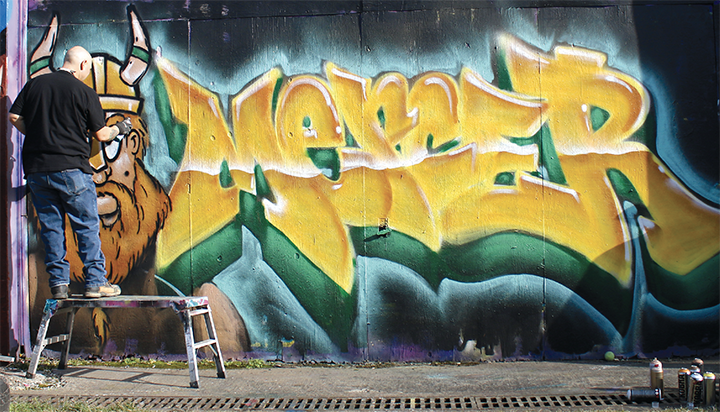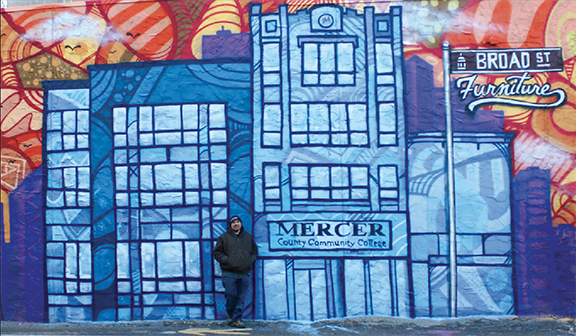Got the urge to purge? Read on to determine which beauty products to keep, how to organize them, and how to safely toss the items you don’t need. (Recycling isn’t just for the kitchen.)
Assess what you’ve got.
Remove all your products from your bathroom, vanity, makeup bag, etc. and lay them out on a large white sheet or towel. “This clean background lets you clearly see and assess what you have, and it’s particularly helpful for seeing the colors and textures of your makeup,” explains makeup artist and beauty expert
Jenny Patinkin. Categorize everything: Split up makeup, skin-care, and hair-care items, and then divide each of those piles into subcategories according to type of product. Now get down to business: “If you haven’t even picked up a product in two years, it’s got to go,” says Patinkin. Cast those items aside quickly and without thinking too much; don’t lament over how much money you spent on that pricey serum you never used. (More on what to do with those products in a minute.)
RELATED:
The Best Anti-Aging Products of All Time, According to Top Dermatologists
Next, assess the quality of what’s left. Any change in texture, color, or smell is a telltale sign that a product is past its prime. If the color is separated on your nail polish, even after you shake it, it’s time to get rid of it. Skin-care items often come with expiration dates, so anything that has expired should go. This quality assessment is important not only for hygiene reasons but also for efficacy purposes, especially when it comes to makeup. “Anything that’s cracked, crumbly, dry, or separated isn’t going to apply evenly,” notes Patinkin. Once you’ve gotten rid of the old stuff, purge any multiples. Have six red lipsticks? Ten pink nail polishes? Limit yourself to one of each shade, keeping the one you reach for most often.
Patinkin suggests putting the products that have made the cut into a box and storing the box outside your bathroom. Anytime you need something, take it out of the box and leave it in the bathroom. “Do this for three weeks. If there are still products in the box after that, chances are high that you’re never going to use them, so get rid of those too,” she says.
Organize what’s left.
Have six red lipsticks? Ten pink nail polishes? Limit yourself to one of each shade, keeping the one you reach for most often.
Now that you’ve streamlined your stash, organize it. Separate skin-care, hair-care, and makeup items, storing each category in its own place. Patinkin recommends using clear, stackable drawers, which let you easily see and access what you need. We like the variety of drawers and dividers from Boxy Girl (from $39;
boxygirl.com). Train cases with pull-out trays are a great space-saving storage solution, adds Patinkin. Try the Caboodles Large Train Case ($99;
caboodles.com). Skin-care products containing active ingredients—vitamin C and retinol, in particular—are best stored in a cool, dry place, away from sunlight, which can render those ingredients inactive. So consider keeping those items in a dark spot, like a drawer or closet. If you have a lot of makeup, separate products for face, eyes, and lips, and then organize those according to container size and shape to make everything tidy, recommends Patinkin. Now ensure your stash stays organized by committing to a deep clean twice a year. Do so during a change of seasons, when you’ll probably be switching up your skin care and makeup anyway, says Patinkin. One item to purge more frequently, however: mascara. It should be ditched about every 90 days, since dark, moist environments are breeding grounds for bacteria, and every time you use the tube, you’re contaminating it. (Preservatives in the mascara lose efficacy over time.)
Get rid of everything else.
Resist the urge to dump all your castoffs into a garbage bag and call it a day. Donating unwanted items is a great option—though for hygienic reasons it’s essential that they be unused, says Pam Koner, executive director of
Family to Family, a nationwide nonprofit that recently helped launch
Share Your Beauty, a beauty donation program. The type of product doesn’t matter; if it’s unused, donate it. “While personal-care products, such as soap and shampoo, may be more critical, makeup items like lipstick and mascara are always wanted as well,” says Koner.
What about the rest? Much of what’s left over can likely be recycled, though it isn’t quite as easy as tossing stuff into your household recycling bin. Not all plastic is created equal, and not all types of plastic are recyclable. Containers made of PET or HDPE plastic can usually be recycled curbside, notes Gina Herrera, the U.S. director of brand partnerships for
TerraCycle, a company that helps recycle hard-to-recycle materials. (The plastic type is usually noted on the bottom of the packaging; look for the recycling symbol and a number from 1 to 7.) You can also recycle certain glass packaging—though, as with plastic, it’s important that it be clean and empty. Recycling rules vary greatly based on location, so check to see what types of materials are accepted by your municipality, advises Herrera. This information can usually be found wherever your local trash and recycling schedule is listed.
RELATED:
11 Steps to Better Skin
Caps, pumps, nail polish brushes, fragrance spray tops, and lipstick tubes typically can’t be recycled curbside, says Herrera. Before tossing these materials into the garbage can, ask your retailer if you can bring the packaging back. Companies including
Kiehl’s,
MAC, and
Lush offer programs that reward you for returning empties. Another option: TerraCycle has partnered with the beauty brand
Garnier to launch a program that accepts personal-care and beauty waste from any brand. Pile your clean beauty discards in a box, create an account on terracycle.com, print out a prepaid shipping label, and drop off the box at any UPS location. Almost everything is accepted except nail polish, perfume, and aerosols, notes Herrera. Drop those items off at a hazardous-waste facility (the search tool on earth911.com can help you find the one nearest to you) and let the pros dispose of them properly.
Other ways to make your beauty routine more sustainable:
To minimize the beauty trash you produce, simple changes go a long way. Perhaps the biggest offenders are face wipes. They’re great for travel, but for daily use, consider swapping wipes for a washable alternative, like the Croon Starter Fibers ($26;
justcroon.com) or Face Halo ($22 for 3;
facehalo.com). When makeup shopping, opt for refillable compacts for eye shadow, powder, and blush. Kjaer Weis houses its makeup in pretty, refillable metal compacts—even the mascara casing can be reused. When it comes to skin care, go for items in glass packaging, like
Tata Harper’s line. (What little plastic the company does use for its tubes is derived from Brazilian sugarcane.) And keep an eye out for Loop, a new waste-free shopping platform that launches in Paris and the New York City area in May, with plans to expand.
Loopstore.com will sell products from major beauty companies (like Unilever, Procter & Gamble, and
REN Clean Skincare) in glass and stainless-steel containers. When you’ve used them up, send them back to be refilled.


 Figure 1 (above) shows the case where Product V is recycled after being supplied at Time 1. Perhaps the ideal case of reuse is my grandmother’s cast iron frying pan, which already has lasted two generations and could endure for five more. For that skillet, the "recycling" process would be a thorough cleaning and the manufacturing process could be skipped.
Figure 1 (above) shows the case where Product V is recycled after being supplied at Time 1. Perhaps the ideal case of reuse is my grandmother’s cast iron frying pan, which already has lasted two generations and could endure for five more. For that skillet, the "recycling" process would be a thorough cleaning and the manufacturing process could be skipped.
 Figure 2 (above) shows what happens if Product V supplied at Time 1 is landfilled instead of being recycled. It is clear that there is both a landfill step and a need to obtain virgin material to create the product to be supplied at time 2.
Requiring both products to be included in a single model eliminates the need to split the impacts between them, and clearly shows the change in system-wide impacts. At the same time, it requires a manufacturer to understand the impacts of its products beyond placement in the recycle bin. Is the product really recycled? What is Product R? Is Product R really equivalent to the Product V it replaces?
The goal of circular economy concepts is to help us make the world a better place. Fulfilling that aspiration will require assessment methods that can distinguish good circular economy ideas from bad ones — to answer, for example, the question of whether recycling a particular product in a particular way is actually beneficial.
LCA is a potentially good tool for that but, to date, it has been providing mixed messages. By including both the initial product and the product made from recycled material in our functional unit, we can bring the process into better alignment with circular economy thinking and gain a clearer picture of what’s really happening.
We’re not quite finished with all of this work and thinking. So if you have ideas or a project you want us to work on, please contact us.
Figure 2 (above) shows what happens if Product V supplied at Time 1 is landfilled instead of being recycled. It is clear that there is both a landfill step and a need to obtain virgin material to create the product to be supplied at time 2.
Requiring both products to be included in a single model eliminates the need to split the impacts between them, and clearly shows the change in system-wide impacts. At the same time, it requires a manufacturer to understand the impacts of its products beyond placement in the recycle bin. Is the product really recycled? What is Product R? Is Product R really equivalent to the Product V it replaces?
The goal of circular economy concepts is to help us make the world a better place. Fulfilling that aspiration will require assessment methods that can distinguish good circular economy ideas from bad ones — to answer, for example, the question of whether recycling a particular product in a particular way is actually beneficial.
LCA is a potentially good tool for that but, to date, it has been providing mixed messages. By including both the initial product and the product made from recycled material in our functional unit, we can bring the process into better alignment with circular economy thinking and gain a clearer picture of what’s really happening.
We’re not quite finished with all of this work and thinking. So if you have ideas or a project you want us to work on, please contact us.


